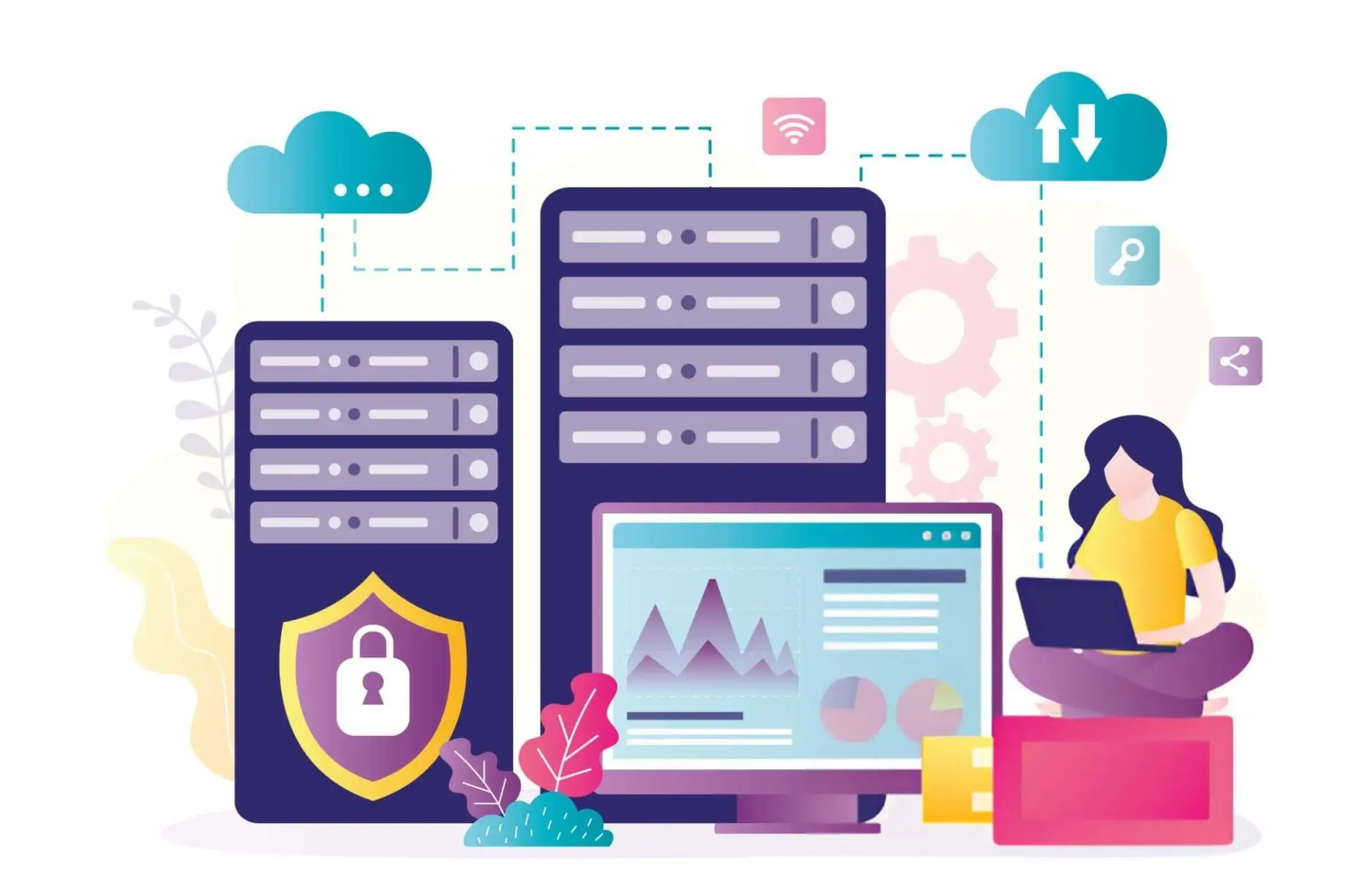In today’s fast-paced digital world, cloud infrastructure is no longer optional - it’s essential. But simply moving to the cloud isn’t enough. Without proper management, cloud costs can spiral out of control, and efficiency gains can go unrealized. That’s where cloud management services come in. In this article, we’ll dive deep into how cloud management services can reduce costs & improve efficiency, and how companies like Creamerz Soft leverage them to deliver value to clients.
What Are Cloud Management Services?
Cloud management services are a suite of tools, processes, and support functions that help organizations oversee, operate, optimize, and secure their cloud infrastructure. These include:
- Monitoring and logging
- Cost governance and budgeting
- Resource provisioning and capacity planning
- Security, compliance, and risk management
- Automation of routine tasks
- Performance tuning and optimization
Cloud management can be delivered via in-house teams, via cloud provider tools, or via third-party managed services. For many businesses, partnering with a specialist gives access to expertise, economies of scale, and mature processes.
The Cost Challenges of Cloud Adoption
While cloud offers many benefits, there are several cost-related pitfalls organizations often run into:
- Over-provisioning: Purchasing more capacity (compute, storage, etc.) than is needed, “just in case.”
- Idle or underutilized resources: Instances, virtual machines, or services running but not doing useful work.
- Lack of visibility: Not knowing where costs are coming from; inability to track spend per project, team, and environment.
- Complex billing structures: Cloud providers often have complex pricing models; data transfer, storage tiers, network usage, etc., can add surprise costs.
- Security and compliance penalties: Failures in security or non-compliance can lead to fines, remediation costs, or data breach costs.
- Shadow IT & lack of governance: Teams spinning up resources without central oversight, leading to waste.
These challenges can lead to unexpectedly high bills, inefficiencies, and difficulty forecasting cloud spend.
Key Components of Effective Cloud Management
To address cost and efficiency, cloud management services typically offer these components:
| Component | Purpose |
|---|---|
| Cost Monitoring & Reporting | Track where you are spending money, per cloud service, per region, per team/project. Helps with budgeting and cost-allocation. |
| Automation & Orchestration | Automate provisioning, scaling, backups, shutting down unused resources. Reduces manual errors. |
| Governance & Policy Management | Define what kind of resources teams can spin up, who can approve them, enforce tagging, and ensure compliance. |
| Security & Compliance | Continuous monitoring of vulnerabilities, access management, encryption, regulatory compliance (GDPR, HIPAA, etc.). |
| Performance Monitoring & Optimization | Ensure services are running well; avoid bottlenecks; use the best pricing tiers; intelligent resource sizing. |
| Disaster Recovery & Business Continuity | Backup, geographic redundancy, failover, recovery processes. Avoid downtime costs. |
How Cloud Management Reduces Costs
Here are the concrete ways cloud management services help cut costs:
Predictable Cost Structure
With proper cost monitoring, governance, and usage forecasting, businesses can avoid surprises. Tools allow setting budgets, alerts for threshold breaches, cost forecasts based on trends. This means no more “bill shock.”
Right-Sizing and Eliminating Waste
By analyzing usage metrics, cloud management helps identify underutilized instances, cold storage, orphaned volumes, idle VMs etc. Eliminating or reducing these wastes saves money directly.
Optimizing Resource Utilization
Through automation and orchestration, workloads can automatically scale up or down based on demand. For example, auto-scaling compute resources during peak demand, and scaling back during low usage. Use of spot instances, reserved instances, or committed use discounts can also lower costs when managed properly.
Reducing Capital Expenditures
One of the biggest advantages: moving from owning physical hardware (servers, storage, and networking) to renting/using resources in the cloud means converting big capital expenditures (CapEx) into operational expenditures (OpEx). No need to build and maintain data centers.
Lower Operational and Maintenance Costs
Managed services include regular patching, updates, hardware maintenance (in case of servers in managed data centers), monitoring, backups, etc. This reduces the load on in-house IT staff. Outsourcing this or automating many tasks reduces labor costs and risk of errors.
Avoiding Downtime and Losses
Downtime is expensive: lost revenue, reputational damage, operational disruption. Cloud management ensures high availability, fault tolerance, disaster recovery, backups. This minimizes downtime and the associated cost.
Improved Pricing Models & Discounts
Cloud management services, especially via third-party or experts, help businesses negotiate contracts, utilize reserved instances, take advantage of bulk/volume discounts, or commit to usage to get better rates. Also help avoid costly data transfer fees, etc.
How Cloud Management Improves Efficiency
Reducing cost is only one side; efficiency gains are equally important. Here’s how cloud management services deliver better performance, productivity, and agility:
Faster Time to Market
Automation, orchestration, and self-service provisioning enable development teams to spin up resources quickly, reducing delays. Creamerz Soft, for example, helps clients deploy cloud infrastructure in days rather than weeks, because environments are preconfigured, monitored, and optimized.
Better Resource Utilization
Monitoring and analytics allow businesses to use the right resources for the right workloads. For example, matching compute types, storage tiers, and network configuration to actual usage patterns. No more over-provisioning.
Scalability and Flexibility
Cloud management enables organizations to scale horizontally and vertically, react to traffic spikes, or seasonal demand. Infrastructure can be adapted to changing business needs without requiring large CAPEX or new hardware procurement.
Standardization and Best Practices
With governance, policies, and templates, organizations avoid misconfigurations, insecure setups, or inefficient architectures. Creamerz Soft helps clients define architecture blueprints so new deployments follow best practices for efficiency, security and cost.
Proactive Monitoring & Incident Response
Tools and managed service layers ensure continuous monitoring, alerting, logging, and response. Problems can be detected early, resources adjusted before performance or availability is impacted.
Enhanced Security & Compliance Efficiency
Rather than reacting to breaches or audit failures, maintained compliance, automated policy enforcement, and standardized security practices reduce overhead, reduce risk, and ensure business operations are smooth.
Real-World Examples
To illustrate these benefits, here are some examples, including how Creamerz Soft leverages cloud management services.
Over-Provisioning to Savings
A mid-sized e-commerce company had many servers always running, even during off-peak hours. After implementing a cloud management service, they identified idle VMs and scaled down autonomously. Cost reduction was ~30-40% in compute spend.
Using Reserved & Spot Instances
Another company shifted non-critical workloads to spot instances, and committed to reserved instances for long-running usage. Cloud management services helped monitor and adjust this mix, leading to 25-35% savings.
Disaster Recovery & Business Continuity
A SaaS provider had no active disaster recovery plan. Cloud management services enabled replication across regions, automatic failover, and regular backups. When one region had an outage, services failed over, avoiding revenue loss and reputational damage.
What Creamerz Soft Does
At Creamerz Soft, our approach to cloud management is built around these principles:
- Comprehensive Audits: Before starting, we audit existing cloud usage, costs, security posture. This helps identify waste and inefficiencies.
- Customized Governance and Policy Development: We help set up rules for resource provisioning, cost tracking, tagging, and access control.
- Automation & Scalability: Creamerz Soft implements auto-scaling, scripted deployments, resource clean-ups.
- Continuous Monitoring & Reporting: We deliver dashboards and reports so clients always know how their cloud spend and usage trends are going.
- Security, Compliance & Risk Management: Ensuring that architecture, data, access are secure; assist clients in meeting regulatory requirements.
By doing so, our clients often see cost reductions of 25-45% within the first 3-6 months, while improving system stability, delivery speed, and security. These numbers are consistent with industry findings that cloud-managed services drive operational efficiency increases and cost reductions.
Best Practices for Getting the Most Out of Cloud Management Services
If you want to reap maximum benefit, here are some tips / best practices, which Creamerz Soft also follows with its clients:
Start with Visibility
Before you optimize, know your baseline: what resources are in use, what are the costs, which teams/projects are consuming the most. Use tagging, dashboards, logging.
Define Governance & Policy Early
Set rules about who can launch what, how resources need to be tagged, limits, and access control. This helps avoid chaotic growth and cost leaks.
Automate Repetitive Tasks
Scripts, infrastructure-as-code, scheduled shutdowns or scaling help minimize human error and free up time for strategic work.
Use the Correct Pricing Model
Reserved instances, spot/pre-emptible VMs, committed use discounts, etc. Mix and match depending on workload criticality and predictability.
Monitor Performance & Usage Continuously
Don’t set and forget. Usage patterns change, new services appear, business needs shift. Regular reviews and optimization cycles are key.
Ensure Security & Compliance Built-In
Build security and compliance into deployment templates and policies. Use tools to detect drift from policy and remediate.
Disaster Recovery & Redundancy Planning
Plan for failures: geographic redundancy, backup strategies, failover, testing of DR plans. The cost of being unable to operate can be far higher than the cost of implementing DR.
Educate Teams & Stakeholders
Ensure that all stakeholders (developers, finance, operations) understand how cloud billing works, what behaviors cost more, and what efficiency means. Often waste comes from lack of awareness.
Review Contracts & Cloud Provider Offers Regularly
New services, new discounts, pricing model changes happen; keep an eye on what providers offer.
Partner with Experts
If your organization lacks deep cloud cost governance or optimization capabilities, partnering with a cloud-management specialist (like Creamerz Soft) can accelerate results and avoid costly mistakes.
Future Trends in Cloud Management
The cloud landscape continues evolving. Here are some trends to watch, and which companies should prepare for:
- FinOps becoming mainstream: Financial operations for cloud (FinOps) practices will become standard, combining engineering, finance, ops to manage cloud spend.
- Multi-cloud & Hybrid-cloud management: Organizations spread across multiple providers; managing costs, security, and compliance across them becomes more complex but also more necessary.
- AI & ML for Predictive Optimization: Using AI/ML to forecast usage, detect anomalies in spend, suggest optimizations.
- Cloud Native & Serverless Architectures: These architectures often are more efficient but require good management of concurrency, cold starts, etc.
- Green Cloud & Sustainability: Optimizing not just for cost, but energy, reducing carbon footprint; using regions with clean energy; shutting down idle compute etc.
- Edge-Cloud Integration: As edge computing becomes more common, managing distributed compute resources including cloud, edge, IoT etc., cost-effectively.




